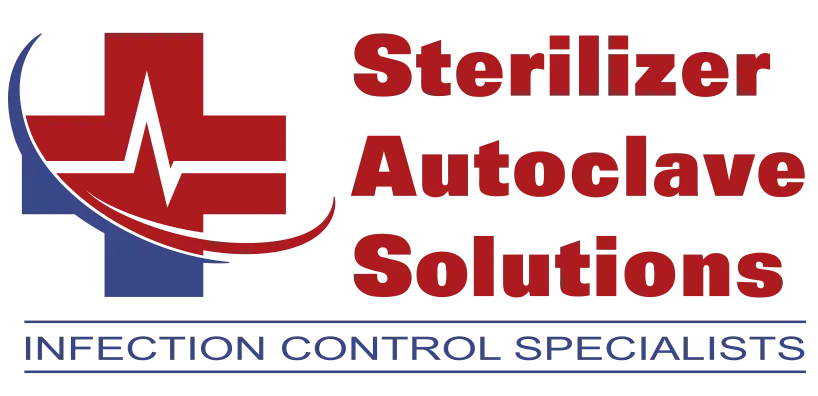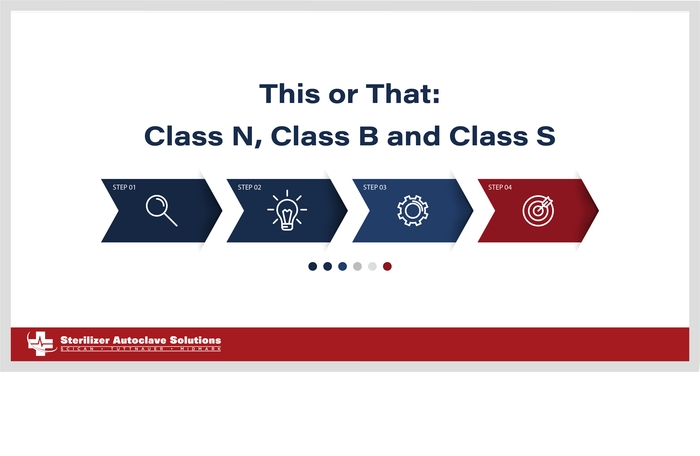This or That: Class N, Class S and Class B
Understanding the differences between classes of autoclaves is essential for selecting the right equipment to meet specific sterilization needs. The variations in autoclave classes, such as Class N, Class S, and Class B, have distinct capabilities and limitations. Hopefully by the end, you’ll better understand the importance of the different autoclave classes. And in turn, make an informed decision when it comes time to look for a new unit for your practice.
Class N
Class N autoclaves are the “simpler” class of autoclaves, in a sense. Because of the technology most of them have, Class N units are usually the most common and most affordable of the 3 classes. Class N autoclaves utilize “gravity displacement” sterilization cycles. This sterilization method relies mainly on flushing ambient air from the chamber using steam. With gravity displacement, steam is injected into the chamber and weighs down the ambient air. As the air is being removed by the dense steam, the steam then begins to sterilize the instruments while continuing to fill the chamber.
Now, the big thing to note about every class of autoclave is that one is not 100% better than the other. Technically, Class N is considered the “weaker” class of the 3, but that’s not to say that it won’t have its place in some practices that can truly benefit from what they offer.
Gravity sterilizers are more suited to tackle simple tools and instruments. Things that don’t contain intricate crevices and a labyrinth of nooks and crannies throughout it since the steam can’t penetrate them in a Class N cycle. But they can run independently from any other machine or peripheral mechanism, which makes them highly dependable and cost effective.
Example of a Class N Autoclave
A good example of a Class N autoclave is Tuttnauer’s 3870M. With a bunch of different benefits, this Class N unit can get the job done. The 3870M is the largest manual table top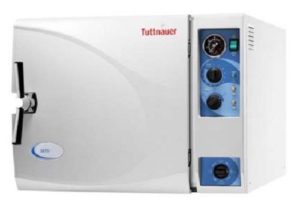 autoclave. that we have here at SAS. It’s perfect for multi-doctor practices, clinics or surgery centers. And the 15” x 30” chamber it sports accommodates longer instruments or a large number of small instruments. It also has capacity for 15 full size IMS cassettes. Along with its size, it also comes packed with some other features and benefits like:
autoclave. that we have here at SAS. It’s perfect for multi-doctor practices, clinics or surgery centers. And the 15” x 30” chamber it sports accommodates longer instruments or a large number of small instruments. It also has capacity for 15 full size IMS cassettes. Along with its size, it also comes packed with some other features and benefits like:
- Automatic shut off at the end of both the sterilization and dry cycles.
- A long life electro polished chamber and door.
- Double safety locking device prevents door from opening while chamber is pressurized.
- Drain valve is located on the front, allowing for quick and easy draining of water reservoir.
- Dual safety thermostat to protect against overheating.
- International certifications
- Supplied with a 3 shelf stand that measures 26 inches wide x 33 inches deep x 34 inches high
The Tuttnauer 3870M can be found on our website here.
Class S
Class S autoclaves are the in-between units of Class N and Class B. This class has benefits of both that make it the perfect middle ground for pracitces that want to meet in the middle when it comes to autoclaves. Class S can sterilize things like single-packed, multi-layer and even more massive tools. Which cannot be done by a Class N unit. Class S can also have cycles that use steam pulses like Class B. But the cycles aren’t quite as effective as Class B because it’s a middle ground unit. But Class S units meet right in the center between cost-effectiveness and efficacy.
However, it’s important to note that not all Class S units have this vacuum capability. Some Class S units do have a weaker pre/post vacuum cycles when sterilizing. However, others does NOT always have a vacuum or air pump for drying. Meaning that while two units can both be Class S, they can differ in functionality. So research is important when you’re looking at Class S units.
Example of a Class S Autoclave
For a good example of a Class S unit, look no further than the Tuttnauer T-Top 10. A 21 liter tabletop autoclave, specifically developed for dental and medical clinics of small to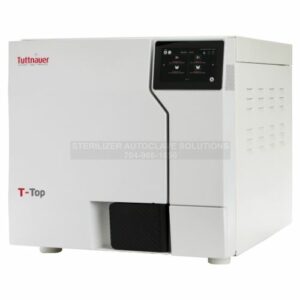 medium practices. Simplicity and economy, this tabletop autoclave covers the fundamental needs for your general clinic sterilization with the aim of increasing the productivity of your practice. T-Top 10 offers universal capacity in an affordable and reliable solution you can count on for managing your daily practice sterilization process workload.
medium practices. Simplicity and economy, this tabletop autoclave covers the fundamental needs for your general clinic sterilization with the aim of increasing the productivity of your practice. T-Top 10 offers universal capacity in an affordable and reliable solution you can count on for managing your daily practice sterilization process workload.
The perfect balance between performance, ergonomics, technology & usability. Resulting in a strong and efficient autoclave which perfectly meets the requirements of all standard practices. And it even has some incredible benefits like:
- Programming and customization functions
- Specially designed user interface to speed up and optimize daily workload
- Wi-Fi connection & T-Connect software
- Remotely access cycle history, get notifications and alerts
- Easy to operate, maintain, and use
- Multicolor user-friendly touch screen
- Compact and ergonomic, designed to fit into your space
The Tuttnauer T-Top 10 can be found on our website here.
Class B
Class B autoclaves are of the highest standard when it comes to sterilization. These units meet all the sanitary-epidemiological standards set for sterilization practices. They’re meant for the heaviest or the most intricate instruments and load types. Class B utilizes the full force of the pre/post vacuum cycle, using a vacuum pump to remove ambient air from the chamber, and inject steam into it as replacement through pulses. This steam injection process allows the steam to deeply penetrate even the most intricate machinery and mechanisms in an instrument. Hollow, porous loads, wrapped items, high-density instruments, the works.
Class B has definitely made a reputation for itself being the powerhouse that it is. But even this class of unit has its use-cases. Being the most powerful, able to tackle as big of a job as it can, means that it’ll definitely drive a pretty penny. So Class B is usually reserved for practices that really need this kind of power.
Example of a Class B Autoclave
For an example of a Class B autoclave, we can point you towards one of SciCan’s best, the Bravo Bravo G4. The Bravo G4 in SciCan’s line of incredible G4 equipped autoclaves.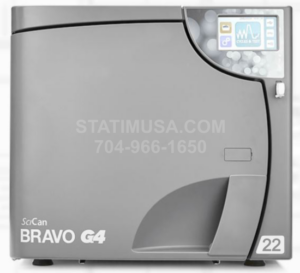 Bringing in quality-of-life improvements that maybe you didn’t think you needed.
Bringing in quality-of-life improvements that maybe you didn’t think you needed.
- A sleek, modern exterior bringing quality of life improvements to the build.
- The intuitive touchscreen interface using the easy-to-navigate G4 interface.
- Reliability
- The SciCan Bravo G4 units utilize the pre/post vacuum cycle of Class B.
- Fast unwrapped cycle times as fast as 33 minutes.
- The upgrade to G4 technology means this machine takes advantage of many useful features for things like data, profiles, Wi-Fi coverage and more.
- These units feature a new “Delayed Start” feature, able to schedule a cycle whenever you need. Even overnight!
The SciCan Bravo G4 can be found on our website here.
Final Thoughts
By being aware of the differences between Class N, Class S, and Class B autoclaves, you can make informed decisions when selecting the right equipment for your specific needs. Whether you require autoclaves for medical, laboratory, or other purposes, knowing the distinctions between autoclave classes will help you better understand the machines. Remember, choosing the right autoclave class is crucial for your practices’ unique day-to-day operation.
And if you have any questions about anything autoclave, you can give us a call at 704-966-1650, option 3. SAS is always here to help, and our Free Tech Support Line is available to anyone at anytime, regardless if you’ve purchased a unit from us or not. You can also find us and our various programs using the links below.
As always if you have any questions about this process or anything else please feel free to contact us and take advantage of our “FREE TECH SUPPORT.”
We also offer FREE VIRTUAL TECH SUPPORT to “See and Talk” with a “Real Time Live Technician” for any problems you may be in need of help with.
You can also use our “FREE MAINTENANCE PROGRAM”. Take the guesswork and worrying about what unit is due for maintenance and which maintenance cycle it is time for. We will keep track of all your autoclaves and let you know when it’s time for anything.
